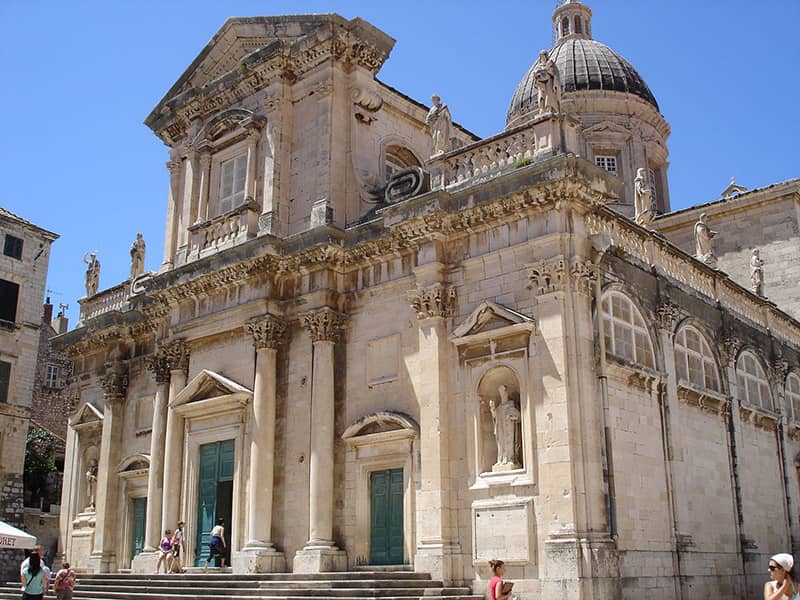The Rector's palace is one of the most impressive buildings in Old Town Dubrovnik and of great historic and artistic value.
Construction of the palace
The construction of the Palace started in the 12th century and lasted a very long time: in 1435, an explosion of gunpowder destroyed the original building. (one part of the palace was armoury). Well known masters like Onofrio della Cava, (the builder of the Dubrovnik water supply) Michelozzo Michelozzi from Florence (builder of the courtyard in the famous Palazzo Vecchio in Florence) and the Juraj Dalmatinac (builder of the famous cathedral at Šibenik) took part. Another explosion in 1463. again damaged the building, especially the western part. Owing to fire and earthquake the building was repaired and restored several times.
The original building was constructed in Gothic style, while during the restoration renaissance details (on the facade, arch vaults, several capitols) were added. After the earthquake in 1667 baroque additions were incorporated. All these parts in various styles are harmonically interwoven give the building a charm of unique beauty.
Dubrovnik Super Saver:
Cable Car Ride and Old Town Walking Tour plus City Walls
Embark on an unforgettable journey through the stunning city of Dubrovnik, renowned for its breathtaking architecture and rich history. Stroll along the narrow and winding streets of the UNESCO World Heritage Site of Dubrovnik Old Town. Be awe-inspired by the mesmerising views from the 16th-century city walls, and take your experience to the next level by taking a cable car ride to Mt. Srd for panoramic views of the city.
Book your tour now and discover Dubrovnik with a knowledgeable tour expert.
Greek mythology
On the capitols of the tall pillars around the large entrance are various decorations in stone presenting flowers, animals, mythological motives and picturesque representations from Greek myths and legends. Why did they decided to carve Greek myths onto the pillars is still unknown, probably due to fascination with ancient Greek. And yes, you correctly saw a dog humping a human on one of the pillars.
Reserved for nobles, but...
The baroque staircase in the courtyard was built after the earthquake, in the centre stands a statue of Miho Pracat, the brave Dubrovnik shipowner of the 16th century. That is the only statute dedicated to a common citizen built during the Republic. The reason that Republic decided to place his bust inside of Rector's Palace is because of his bravery and generosity.
Breaking a pirate siege on one of his voyages got him an audience with Charles the Fifth, when he successfully brought back ships loaded with corn to the hungry citizens. Allegedly he spent a portion of his wealth to buy and set free Christians captured by the Ottoman empire. After his death, in his will he left all his wealth to charity.
Floor plan
On the ground floor were the archives of the Republic, the jail and the ammunition stores. On the first floor was the Rector's residence and his small chapel. The Republic's coat of arms in stone can be seen above the staircase together with a clock and small bell.
Rector's Palace today
Today the palace houses the Historical Museum of Dubrovnik's past. The permanent display is housed in the Rector’s Palace, and has been in part handled environmentally and most of all presents the artistic and historical heritage of the last period of the Dubrovnik Republic.

Working Hours
09:00 - 16:00, 09.00 - 18:00 (Summer)
Features
Cultural History Museum / Concerts / Exhibitions
Address & contact details
Street: Pred Dvorom 3
Postcode: 20000
City: Dubrovnik
Website: The Rector's Palace / Cultural History Museum
Where to stay in Dubrovnik
Our top picks for where to stay in Dubrovnik.